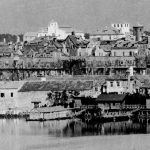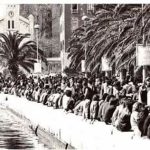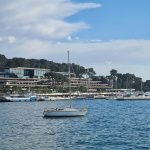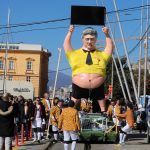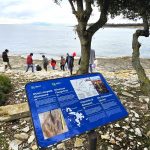How much do you really know about the history of the Split lazaret? A look at Split in history courtesy of the Facebook group Split kroz povijest.
Commercial traffic on the mainland to Split was so desirable – said the great historian of Split in the nineteenth century, Vicko Solitro – that traders came here from India and Persia, forcing it to become a golden ring between the East and Venice.
So goes the story of the Split lazaret.
Due to the continued increase in traffic at the Split lazaret, the famous building for goods was extended on two occasions, ultimately making it one of the largest and best-equipped lazarets in Europe. Because of this, the Venetian government was especially concerned about its security; all the goods from the East went through Split on Venetian ships that traveled to Venice and from Venice further to European cities, and all the goods from Europe were transported by Venetian ships through Split and by caravans in Turkey and the Far East.
The lazaret was built in Split outside of the city walls to the southeast, in today’s location of the Port Authority and Bishop’s Palace. The length of the lazaret, on three occasions of its construction, exceeded the length of the entrance to Diocletian’s palace – about 200 meters in length and about 100 meters in width. In the position of today’s eastern harbor, in front of the Port Authority, there was a small breakwater where all of the goods were loaded and unloaded on and off the ships.
While the protective health regulations on the lazaret were stringent, it did not wholly prevent the building from all harmful contagions. Before the construction of the lazaret, Split saw its fair share of epidemics in the city, and especially in the 14th, 15th and 16th centuries. After the construction of the lazaret, epidemics happened less frequently, but still in 1607, 1731/32, 1763/64, and the last in 1784.
There have been many floor plans and drawings of this structure in Split, and most all of them highlighted the complex not only as a prominent Venetian lazaret but as an important European lazaret as well. Everyone that came to Split admired this building, just like the remains of Diocletian’s Palace.
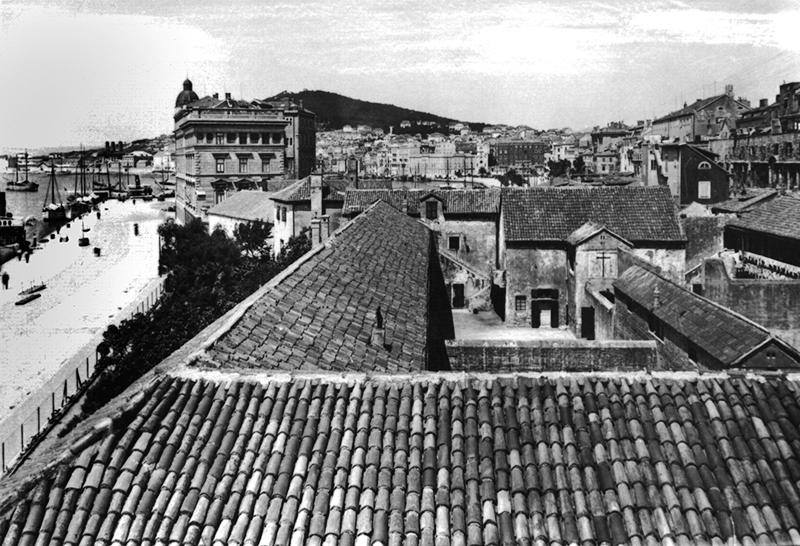
The lazaret had several courtyards with wells that had a somewhat sulfur-like water running in them for washing goods, healthcare, caretakers, and caravan horses. There was a Church of St. Roch in it, and a special room for conversations isolated from the outside world. It even had several smaller towers for protection.
The caravans, with up to 500 horses and mules, brought goods twice a week, and after grooming and prescribed quarantine, they drove to the Venetian galleys. Travelers who came from the East had to spend about forty days there.
While there was so much traffic at the Split lazaret, the people of Split themselves did not play much of a part in it – apart from minor service activities and to protect it from epidemics. The traders were the Turks and Venetians, and the Turks also led the caravans. Caravans and ship traffic at the Split lazaret took place in the eighteenth century. In the representative graphs illustrated by the travel document of Istria and Dalmatia, the French author Joseph Lavallée wrote about Split on the basis of the travelogues and the representative watercolors of the painter Louisa Françoise Cassas from 1782. Among other things, he wrote:
“From a commercial point of view, Split was a very important city for the Venetian Republic, a merchant’s haven of merchandise trading with the Turks. All the caravans from Turkey came to it, where they dispatched their goods and the goods were distributed throughout Europe. These caravans did not go to Split just for land connections, but for the well-being, security and depth of the harbor. The harbor made it possible for the largest merchant ships to get there and to stay there; they also provided caravan trade in Split and very useful trade links with the Greek Islands, Egypt and the entire Levant. And that constant traffic with Split has conditioned the construction of a lazaret, perhaps one of the most beautiful among those seen in the coastal cities of Europe, and whose size allows the traffic of a marketplace to this city and the many horses and hunters who are forced to undergo the preconditions of quarantine.”
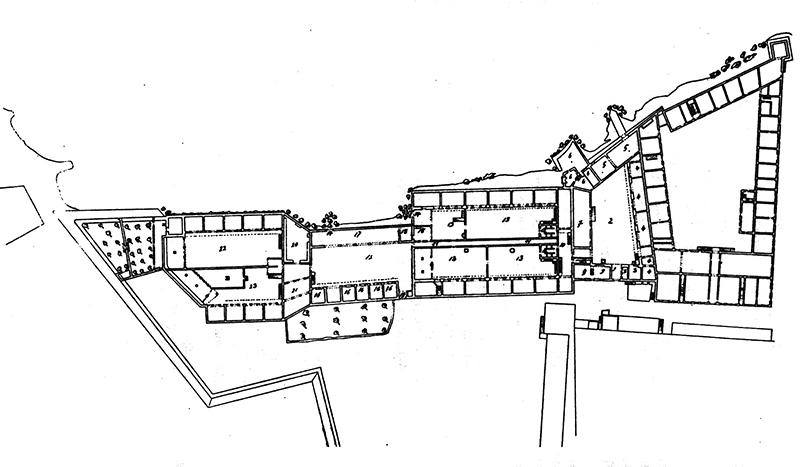
In the nineteenth century, caravan traffic declined and was redirected to ships, and soon to steamships. With the renunciation of earlier activities, the premises of the Split lazaret was then repurposed, and the southwestern tower was used for the military. The lazaret included customs and financial services, and in the courtyard, there was Veseljković Theater for the Split public from 1826 to 1845.
The lazaret was later demolished in the 20th-century and the final remains of the foundation were removed to build the Tourist Palace in 1968.
Translated from Split kroz povijest, source D.Kečkemet


